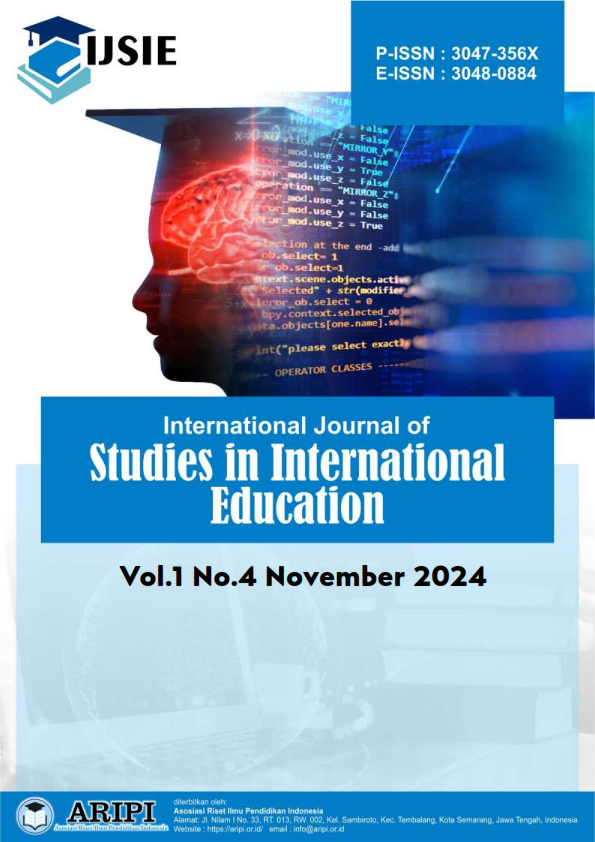Differentiated Instruction to Enhance Critical Thinking Character in Islamic Elementary School Students in Makassar
DOI:
https://doi.org/10.62951/ijsie.v2i2.274Keywords:
Differentiated Instruction, Critical Thinking, Islamic Elementary School, Learning Readiness, InterestsAbstract
This research aims to analyse the effectiveness of differentiated instruction implementation in enhancing critical thinking character in Islamic Elementary School students in Makassar. The research employed a mixed-method approach with an embedded experimental design. The research sample consisted of 68 fourth and fifth-grade students from three Islamic Elementary Schools in Makassar, selected through purposive sampling. Data were collected through observation, critical thinking ability tests, interviews, and documentation. Differentiated instruction was implemented for 12 weeks, considering variations in students' learning readiness, interests, and learning profiles. The results showed that: (1) the implementation of differentiated instruction was effective with an implementation rate of 87.5%; (2) there was a significant improvement in students' critical thinking abilities with an effect size of 0.82 (high category); (3) the three aspects of critical thinking that experienced the highest improvement were analyzing arguments, evaluating information, and drawing conclusions based on evidence; (4) success supporting factors included comprehensive lesson planning, school leadership support, teacher competence, and integration of Islamic values in the learning process. This research recommends the implementation of differentiated instruction as a strategy to develop students' critical thinking abilities while considering individual learning characteristics and needs.
References
] Abdullah, M. A. (2018). Islamic studies in higher education in Indonesia: Challenges, impact and prospects for social harmony. Al-Jami'ah: Journal of Islamic Studies, 55(2), 391–426. https://doi.org/10.14421/ajis.2018.552.391-426
] Al-Attas, S. M. N. (2017). The concept of education in Islam: A framework for an Islamic philosophy of education. International Institute of Islamic Thought and Civilization (ISTAC).
] Alsharif, L., & Eissa, M. (2021). The effect of differentiated instruction on students' critical thinking skills. International Journal of Instruction, 14(2), 85–104. https://doi.org/10.29333/iji.2021.1426a
] Anderson, L. W., & Krathwohl, D. R. (2001). A taxonomy for learning, teaching, and assessing: A revision of Bloom's taxonomy of educational objectives. Longman.
] Anggraena, Y., & Tim Penulis. (2022). Kajian akademik kurikulum untuk pemulihan pembelajaran. Kementerian Pendidikan, Kebudayaan, Riset, dan Teknologi.
] Barrows, H. S. (1986). A taxonomy of problem-based learning methods. Medical Education, 20(6), 481–486. https://doi.org/10.1111/j.1365-2923.1986.tb01386.x
] Barrows, H. S., & Tamblyn, R. M. (1980). Problem-based learning: An approach to medical education. Springer.
] Creswell, J. W., & Plano Clark, V. L. (2011). Designing and conducting mixed methods research (2nd ed.). Sage Publications.
] Ennis, R. H. (2011). The nature of critical thinking: An outline of critical thinking dispositions and abilities. https://education.illinois.edu/docs/default-source/faculty-documents/robert-ennis/thenatureofcriticalthinking_51711_000.pdf
] Facione, P. A. (2011). Critical thinking: What it is and why it counts. Insight Assessment. https://www.insightassessment.com/wp-content/uploads/ia/pdf/whatwhy.pdf
] Griffin, P., McGaw, B., & Care, E. (Eds.). (2012). Assessment and teaching of 21st century skills. Springer. https://doi.org/10.1007/978-94-007-2324-5
] Lubis, M. A., & Wekke, I. S. (2016). Integrated Islamic education in Brunei Darussalam: The hope and the reality. Tawarikh: International Journal for Historical Studies, 5(2), 197–212.
] Santrock, J. W. (2011). Educational psychology (5th ed.). McGraw-Hill.
] Tieso, C. L. (2015). 25 years later: A retrospective reflection on differentiation, diverse learners, and the role of intelligence in curricular assessment, development, and planning. In D. A. Gentry & S. Hodges (Eds.), ViPS theory into practice (pp. 67–80). NAGC Press.
] Tomlinson, C. A. (2014). The differentiated classroom: Responding to the needs of all learners (2nd ed.). ASCD.
] Tomlinson, C. A., & Imbeau, M. B. (2010). Leading and managing a differentiated classroom. ASCD.
] Valiandes, S. (2015). Evaluating the impact of differentiated instruction on literacy and reading in mixed ability classrooms: Quality and equity dimensions of education effectiveness. Studies in Educational Evaluation, 45, 17–26. https://doi.org/10.1016/j.stueduc.2015.02.005
] Voogt, J., & Roblin, N. P. (2012). A comparative analysis of international frameworks for 21st century competences: Implications for national curriculum policies. Journal of Curriculum Studies, 44(3), 299–321. https://doi.org/10.1080/00220272.2012.668938
] Wagner, T. (2010). The global achievement gap: Why even our best schools don't teach the new survival skills our children need—and what we can do about it. Basic Books.
] Wang, Y., & Ma, L. (2020). The influence of differentiated instruction on critical thinking in social studies education. Journal of Social Studies Research, 44(4), 345–355. https://doi.org/10.1016/j.jssr.2020.04.002
] Wiggins, G., & McTighe, J. (2005). Understanding by design. ASCD.
] Zohar, A., & Dori, Y. J. (2010). Higher order thinking skills and low achieving students: Are they mutually exclusive? Journal of Educational Research, 96(4), 243–250. https://doi.org/10.1080/00220670009598729
Downloads
Published
How to Cite
Issue
Section
License
Copyright (c) 2025 International Journal of Studies in International Education

This work is licensed under a Creative Commons Attribution-ShareAlike 4.0 International License.




